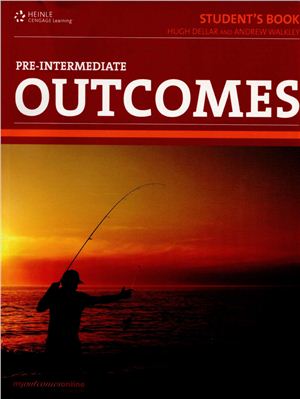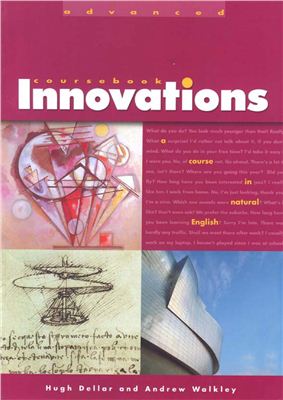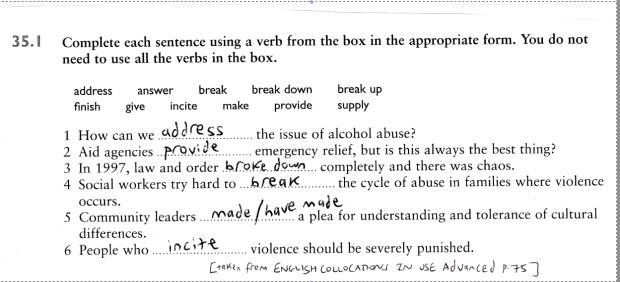This post is essentially a response to a request by one the blog’s readers, Patrick Gallagher, who emailed me recently and asked for ideas on using material that’s essentially written for self-study in the classroom.
Now, initially I was struck by this because, naturally, as a coursebook writer, my immediate reaction is simply to ask why on earth you’d need to bring this kind of material into the classroom when there are already great lexically-rich materials out there written specifically for everyday classroom use.
However, as I thought about it more, it occurred to me that there’s actually a fair bit more decent lexically-oriented material geared towards self-study than there is geared towards explicit classroom study, and maybe this fact shouldn’t surprise. The Headway / English File atomistic structural grammar syllabus still dominates and within this framework, vocabulary is not only treated very much as second best, but is also all too often limited to a focus on single words or, at best, collocations. The harsh reality is that it’s hard to get lexically-rooted material into class as the main focus, so I guess many teachers out there get round being shackled with a coursebook they may not particularly believe in or have much philosophical affinity with by bringing photocopied extracts from self-study material in.
And there IS plenty of good stuff out there: my own personal favourite and the one I recommend to all my students is ENGLISH VOCABULARY ORGANISER by Chris Gough, but then there’s also the ENGLISH COLLOCATIONS IN USE series by CUP, the PHRASAL VERBS ORGANISER and IDIOMS ORGANISER published by National Geographic Learning, George Woolard’s KEY WORDS FOR FLUENCY series and so on.
So what might teachers do with this stuff if we do decide to bring it into the class? One of the problems with doing this is obviously the fact that this stuff is all written to be done and home, checked and gotten on with. I was never designed with the classroom in mind and so fails to leap off the page in any kind of obvious way. As a little thought experiment, I’ve picked one exercise from ENGLISH COLLOCATIONS IN USE Advanced and imagined what I might do with it were I to use it to supplement a class, in the hope that it might provide some food for thought and fresh ideas for some of you. So here goes.
The exercise I’ve chosen is on social issues, which I’ve selected simply because this week with my Intermediate class we were doing some work on describing changes and this came up (Unemployment has gone down a bit over recent months / The divorce rate has risen dramatically over the last few years, and so on.) Here it is.
Well, the first thing I’d do is look long and hard at what language is there to be exploited so that when I was going through the answers, eliciting them from the whole class, I’d know what I wanted to focus, what I could ask the class about, what extra examples I might want to give and so on. I think it’s important that the teacher leads the class through this process BEFORE asking students to anything more personal or creative with what’s there.
In class, I’d tell students we were going to look at a bit more language to help them talk better about social issues, give them the exercise and tell them to fill in the gaps with the best missing words. As students are working their way though, I usually go round and check what’s right and wrong. If they have wrong answers, I might just say something semi non-verbal and negative like ‘Uh-uh!’ and point at the offending item. If students ask about a particular item, I may give a quick contextually-relevant answer too. In between doing all this, I’d also be writing sentences up on the board, with gaps in them, to expand on what’s there on page in a minute or two. These sentences are just things I either plan in advance or come up on the spur of the moment and they’re all things that might be said / heard around the language that’s being tested.
Once maybe 60-70% of the class have finished, I stop the whole class and put them in pairs, tell them to compare and then round up once I can see a few pairs have basically checked and agreed.
The round-up / checking is the first way the teacher can bring some of this language to life. What’s vital is we do more than simply get the answers and write them up. Here’s how I might run through this part myself:
So, number 1? Yeah, right. ADDRESS. Where’s the stress? Good. ADDRESS. The second syllable. And what how could a government, say, ADDRESS an issue like alcohol abuse? What might happen? What might they do? Well, for example, they might MMM street drinking. They might make it illegal. Right, so they might BAN it. Good. Another thing they might do is to make it more expensive to buy alcohol, so they might MM-MM taxes on alcohol, they might make them go up, so? yeah, INCREASE. And one last thing they might do is they might make it harder for companies to advertise alcohol, so they might not ban it completely, but they’ll MM-MM it. Anyone? No? The first letter is R. No? RESTRICT it.
On the board, by now, I’d have added the three words I elicited – or tried to elicit – to the sentences I wrote up earlier, so I’d already have something like this:
Last year they banned people from drinking on the street. It’s totally illegal now. They’ve increased taxes on alcohol again. They really ought to restrict alcohol advertising, so that kids aren’t exposed to it as much.I’d then ask if anyone else had any other ideas on how the issue of alcohol abuse could be tackled – and would either accept students’ offerings, or else rephrase / reword them, maybe writing up extra sentences, depending on what came back from the class. I might also ask what other kinds of issues governments might sometimes need to address – and would hopefully get back one or two ideas from the class.
For number 2, I’d again elicit the answer and probably write it up on the board. I’d then ask if they could think a famous example of an aid agency (Oxfam, ActionAid, the WHO, etc.) and would ask what kind of things they might provide as emergency relief – and when. Again, I might add some of their ideas to an already-prepared sentence on the board. Perhaps something like this:
The provision of emergency aid / supplies / relief in the wake of the earthquake / flooding / tsunami / volcanic eruption saved thousands of lives.
Next, I’d elicit the answer to 3, and ask what happens when law and order completely breaks down. Again, I’d have already got a couple of sentences prepared to help narrow the focus and hone the input. As such, I’d ask something like this: So one thing that often happens when law and order breaks down is large groups of people go into the streets and fight the police or the army. They maybe throw petrol bombs or rocks at them, they might burn cars, that kind of thing. This is called a? Right, a RIOT. And RIOT can be a noun or it can be a verb, so here it’s a noun. OK. And another thing that often happens is people go into shops – large groups of people often, and maybe when the shops are closed, you know, they break in and then they steal loads of stuff, so they MM the shop. Anyone? Begins with L. No? They LOOT the shops. And what kind of thing might make all this happen? Why might people start rioting and looting? Yeah, right. It’s often when people are angry at the police because of something the police have done. And this makes the riots happen. It MM the riots. Anyone? Like a match, when you light a match, sometimes little MM fly off. Yeah, right. SPARKS. And it can be a verb too, you can SPARK riots or SPARK public anger. On the board, I’d then have this.
A man died in police custody and it sparked three days of rioting and looting. The police totally lost control of the whole area.For number 4, after eliciting the answer, I’d check what the group thinks social workers do. I’d then ask what it means in this context, breaking the cycle of abuse, and check they understand that it means kids who are physically abused themselves are more likely to abuse their own kids – or other people’s – later in life. It’s a vicious cycle. I might have a sentence like this up on the board:
Kids who are abused are more likely to abuse others in later life. It’s a vicious circle that’s hard to break.I might also add that in lots of regional conflicts around the world, it can be very very hard to break the cycle of violence. One side kills someone, the other side seeks revenge. There’s then revenge for THAT attack, and then yet more revenge and so it goes on. It’s really hard to step out of that.
I’d then elicit number 5 and point out that both tenses are possible, depending on whether it’s connected to something happening now or not. I’d add that you can also make a plea for peace or for calm. I’d ask when someone might make this kind of plea (after a murder, after a terrorist attack, after a terrible crime, etc.) and why (they don’t want things to turn violent) – and I might also add that charities can make a plea for help or for donations at times of real need. I might end up with something like this on the board:
The father of the murdered boys has called for peace / has made a plea for peace amidst fears that the tensions could explode into violence.
I might then tell the amazing story of Tariq Jahan, whose two sons were killed during the Birmingham riots of 2011, but who almost single-handedly prevented an ugly situation getting much worse through his calm, his compassion and his charisma.
Finally, I’d elicit the answer to number 6 and I’d ask how you might INCITE violence. I might add that Tariq Jahan could easily have incited anger and hatred after the death of his sons, and could easily have persuaded others to go out and seek revenge, but chose not to. I might then add that there are relatively new Hate Speech laws in place in the UK that outlaw hateful, threatening, abusive, or insulting communication that targets people on account of skin colour, race, disability, nationality, ethnic or national origin, religion, or sexual orientation. It’s not uncommon for extremists to go on trial accused of inciting racial hatred, for example. I might add / complete one final sentence on the board, perhaps something like this:
He’s some kind of neo-Nazi. He’s on trial at the moment. He’s accused of inciting racial hatred via his website and his online publications.Hopefully, this will give some pointers as to how the teacher can bring a fairly dry self-study piece of material to life in the classroom and use it to revise and recycle language students already know, to allow exposure to plenty of fully grammaticalised sentences, to connect the classroom material to the wider world outside and to provide space for students’ own ideas, theories and questions.
In the next part of the post, I’ll go into some more detail about how teachers can next get students to do a range of interesting things with any kind of self-study material they might happen to bring in. Until then, I look forward to your comments and questions.






[…] This post is essentially a response to a request by one the blog's readers, Patrick Gallagher, who emailed me recently and asked for ideas on using material that's essentially written for self-stud… […]
Great article & great ideas by a great teacher.
I developed an online course by means of your “Innovations Intermediate” textbook to prepare my students for the CEFR B1 level. It proved to be an excellent means: the students were provided with my virtual classroom plus contact lessons on a weekly basis. My students did like your book and, in fact, all those who took the B1 (or EOI’s NI2) exams got good results.
Hi there –
Many thanks for taking the time to read and to add your comments.
Makes it all worthwhile.
It’s great to hear that your students responded so positively to the ideas in INNOVATIONS Intermediate and that it helped them make such good progress. I’ve always maintained that if teachers would just give the material a try and see how students develop as a result of using it, then more might make that leap, so it’s lovely to see some evidence to back this theory up!
[…] the first part of this post, I explored some of the things that you can do as teacher – both in terms of preparation / […]
Thanks for this! It’s really helpful advice. I often try to supplement our course books using the same collocations book but have always wondered if I was wasting student’s class time by using it in class when it could be set for homework. I just wasn’t exploiting the material enough. Thank you.
Hi there –
Thanks for the comments. Glad to have been able to provide a few ideas on how the material might better be exploited in class.
I guess from my own perspective, I do tend to still see this stuff as homework material. After all, that is what it was written as in the first place.
I’ve come to a position now where if I do have a few spare minutes at the end of a class, I tend to go back and riff off something that’d come up earlier in the class and get students to do some speaking around that instead, and then rework what they say if there’s still time left. That said, I can see why teachers might want to bring this kind of thing into the classroom and try to get the maximum from it.
Personally, I wish more teacher training and development would focus on this kind of stuff: ways of getting the most out of the language that’s there on the page.
Instead, far too much seems to still be focused on games and recipes and ‘things you can do on a Monday morning’!
Anyway, thanks again.
The positive feedback always helps when it comes to finding time to write Part Three!
I love these posts, Hugh, and find them invaluable for recommending to teachers who have been trained to be party entertainers but who can’t pull that demand off.
An interesting follow-up would be a post on how to get students doing something with this new language. The kind of approach you mention above can be seen by some people as drowning students in input, but depriving them of opportunities for output. The question that some will have is, “Now that they’ve got this input, what do they do with it?” Your views would be welcomed!
Hi there –
Thanks for reading and for the kind words.
Glad this one has proved useful to you in your context.
I’ve long thought that the ‘what will students do with all this input?’ argument is pretty lazy and is often trotted out as an excuse for not doing very much actual teaching, to be honest, but you are right. It IS important to discuss what happens next. The first part of what we can get students to do with this language is what I’ve covered in Part Two. In Part Three, I’ll look at some more ways we can get students interacting with the language in fruitful ways and, if I can find time, I may even do a part four looking at ways of revising this language – and stuff that comes up from exploring it – in future classes as well.
Bottom line, though: students only learn language from language!
[…] the two previous posts in this little mini-series, I have talked firstly about how I might tackle any given piece of vocabulary-based / lexical self-study material that you bring into class in terms of what I’d do, say, ask and write whilst checking the […]
[…] posts when a member of my PLN tweeted part 2 of the series (as linked). Of course I then also read part 1 (and part 3 when it later came out!) Bursting with helpful ideas, these posts really got me […]
[…] related back to Hugh’s recent blog posts about exploiting lexical self-study material (part one, two, three). It is important to remind ourselves that ultimately we are language teachers, and […]